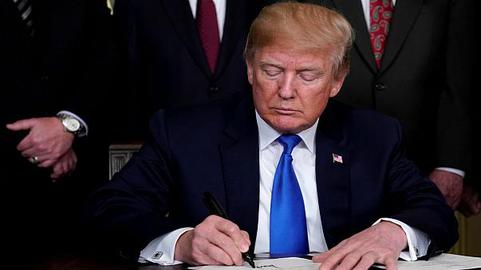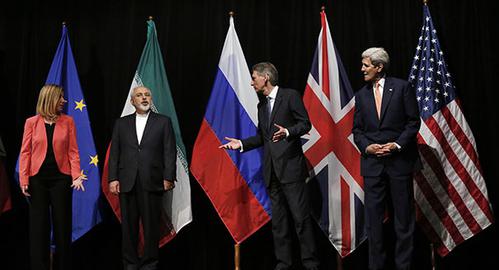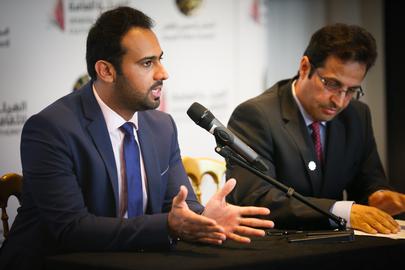Windows of opportunity do not stay open long. The United States stayed in the nuclear agreement with Iran, the Joint Comprehensive Plan of Action (JCPOA), for more than two years. Two years could be a moment in history. In the world of commerce and business, two years is long enough to begin, to succeed, to fail, to introduce a new product or to build new partnerships. There is no doubt that the United States has quit the JCPOA because of political and even personal reasons, with President Trump’s impulsiveness shadowing almost everything else. However, one question must be asked: Did Iran and the United States take full advantage of the opportunity the JCPOA offered and expand and strengthen trade between the two countries?
At first glance, when the JCPOA was implemented in 2016, it appeared as though bilateral trade between Iran and the United States was about to embark on a new era. Iranian airlines, including Iran Air and Asseman, signed contracts ordering scores of Boeing-manufactured aircraft. The United States permitted the import of pistachios and Persian rugs from Iran. Iranian businesses began exploring the prospects of importing medical equipment, pharmaceutical products, agricultural products and machinery. Many Iranian producers had an optimistic view toward the United States markets. Encouraged by the size of Iranian-American communities, they still believe there is strong and steady demand for Iran’s food products. It seemed as though both sides had mutual interests, which could expand further with bilateral trade. However, the reality of what actually followed is dramatically different. As Alireza Nader, president of NRG Consulting in Tehran, puts it, while the JCPOA was in place, trade between Iran and USA “remained negligible.”
In 2016, trade between Iran and the USA reached US$250 million. Iran exported $87.7 million worth of food, Persian rugs and other items to the USA and imported $172 million worth of products from the USA. The trade balance weighed strongly in the USA’s favor. However, when Donald Trump came to the White House in 2017, the trade volume between the two countries began to decline, falling below $200 million. Iran’s exports to the USA dropped by 28 percent to $63.2 million and its imports from the United States decreased to $137.7 million, a 19 percent decline. As Iran’s trade with Asian and European countries increased, its existing commerce with the USA kept shrinking.
"As Difficult as Crossing a Valley on a Blown-up Bridge"
Erich Ferrari, a sanctions legal expert and attorney in Washington DC, told IranWire that the primary sanctions were to blame for the US' lack of enthusiasm to trade with Iran. “There was very little relaxation of primary sanctions,” he said. “Most of the sanctions preventing US people from dealing with Iran prior to the JCPOA remained in place throughout the US' participation in the JCPOA”.
In addition to this, there were many other factors that damaged trade between the US and Iran. The two countries do not have diplomatic relationships, and haven’t for decades. No trade mission representing businesses and facilitating trade was established or undertaken on either side.
I spoke with Alireza, a 54-year-old exporter of Persian rugs. “There is no link between the USA and Iran. Dealing with the USA is as difficult as crossing a valley on a blown-up bridge,” he said. When the JCPOA went into effect, there was no infrastructure in place to conduct trade and to promote business opportunities. Iranian and American businesses soon lost interest. Erich Ferarri believes the banking sanctions and the lack of any banking channel between the two countries added further complexity to an already complex situation. “There were still many practical obstacles impeding their ability to trade. Such obstacles included a reluctance by major international financial institutions to facilitate business.” This reluctance, which was established in the days before the implementation of the JCPOA, continued, not only because it had become the norm, but also because primary sanctions remained in place and because the United States’ Office of Foreign Assets Control was very slow to issue waivers on those sanctions.
Babak, an Iranian American businessman living in Los Angeles, is well aware of the pitfalls of operating in an anxious work environment. “In business, we need to be careful about uncertainty. The framework for doing business with Iran remained always ambiguous. No one felt comfortable stepping forward.” In Iran, doing business with the USA remained complicated after the JCPOA was in effect — and it also continued to be a concern for national security. When the Revolutionary Guards’ intelligence branch arrested businessman Siamak Namazi and his 82-year-old father Baquer Namazi, many Iranians with dual citizenship considered it a warning, drawing the conclusion that Iran was not a safe business environment. The optimism began to fade away.
Iran’s bureaucracy slowed down Iranian businesses trying to take advantage of the opportunities offered by the JCPOA, and Iranian politicians were reluctant to bridge the existing gaps. “Iran did not do enough to use the opportunity provided by the JCPOA to improve relations with the US while Barack Obama was president,” says journalist and foreign relations expert Barbara Slavin.
It is true that Iranian airlines planned to purchase 120 Boeing 737 and 777 airplanes valued at US$20 billion. However, these airplanes were never delivered to Iran. And Iran Air, Iran’s national flag carrier, continual search for an investor dragged on. It reached out to European banks, particularly German and Italian financial institutions, to provide the necessary financing and banking support. Finally, in winter 2017, Iranian media outlets reported that Iran Air had signed an agreement with an undisclosed Chinese firm to facilitate the purchase of Boeing aircraft. But it is notable that over the last two years, there has been no report of any Iranian flight crew being trained to operate the new airplanes. And despite the fact that Iranian airlines continue to operate older models of Boeing aircraft, there was no agreement on technical support or transfer of knowledge, no effort to ensure that that part of the industry was keeping up to date. “Let’s not forget that Iran is not a business-friendly environment due to corruption, outdated baking systems and standards, and heavy red tape,” says Alireza Nader. All of these contributed to Iran’s sluggish behavior when dealing with American businesses.
A Reminder of How the World Had Changed
While the JCPOA has been in place, Persian rug exporters outperformed other sectors in terms of trade with the US. In 2017, Iran exported $60 million worth of Persian rugs and carpets to the USA, accounting for one-sixth of its total exports. However, Iranian exporters had not expected to return to the US market, especially since the market demand had evolved significantly in favor of industrially-manufactured rugs. “The market is saturated by rugs from Pakistan, India and China. Persian rugs from Iran are expensive and cannot compete,” observed Mahmoud, who owns a Persian Rug gallery in Maryland. Instead, Iranian exporters were looking to sell handcrafted Persian rugs, which are considered luxury items. “We wanted to sell in galleries and boutiques, but the customers buy from chain stores and department stores, which we know very little about,” said Alireza, the Persian rug exporter from Tehran. So in this case in particular, the JCPOA served more as a reminder for Persian rug exporters that the world had changed, rather than offering an opportunity.
Iran did not use the opportunity the JCPOA might have provided to expand its bilateral ties with the USA. In part, this was because politics continues to dominate Iran’s economy and trade, and also because of bureaucracy slowing processes down — and also because of corruption. In addition, Iranian businesses are not as digitally savvy as their global rivals. They badly need to learn how to update their toolkits as well as their business perspectives.
However, the reason the USA left the JCPOA had nothing to do with Iran’s failure to meet its potentials for bilateral trade with the US. “This is Trump’s mess and Trump’s responsibility,” says Barbara Slavin, adding that she believed that “Trump never had any intention of honoring the deal.”
But not everyone agrees with her. Alireza Nader argues that the JCPOA failed long before Trump’s announcement to bow out. “Much of the money given to the Iranian regime after the nuclear agreement didn’t make it to the average Iranian due to corruption and expenditures on foreign wars,” he says.
As with most matters to do with Iran’s economy and its relations with the United States, the fragility of the JCPOA in light of the US pull-out has led to a range contradictory remarks and counter speculations within Iran. But one thing is certain: if the Iranian private sector had been in charge of what happened following the implementation of the JCPOA, and had benefitted from strong networks and a business-friendly environment, it would not have been so easy for President Trump to extract the United States from the JCPOA. Iran failed to benefit from the JCPOA mostly because the government wanted to control the situation, using cumbersome bureaucracy and protracted procedures, and refusing to follow best practices for trade and business.
visit the accountability section
In this section of Iran Wire, you can contact the officials and launch your campaign for various problems


























comments